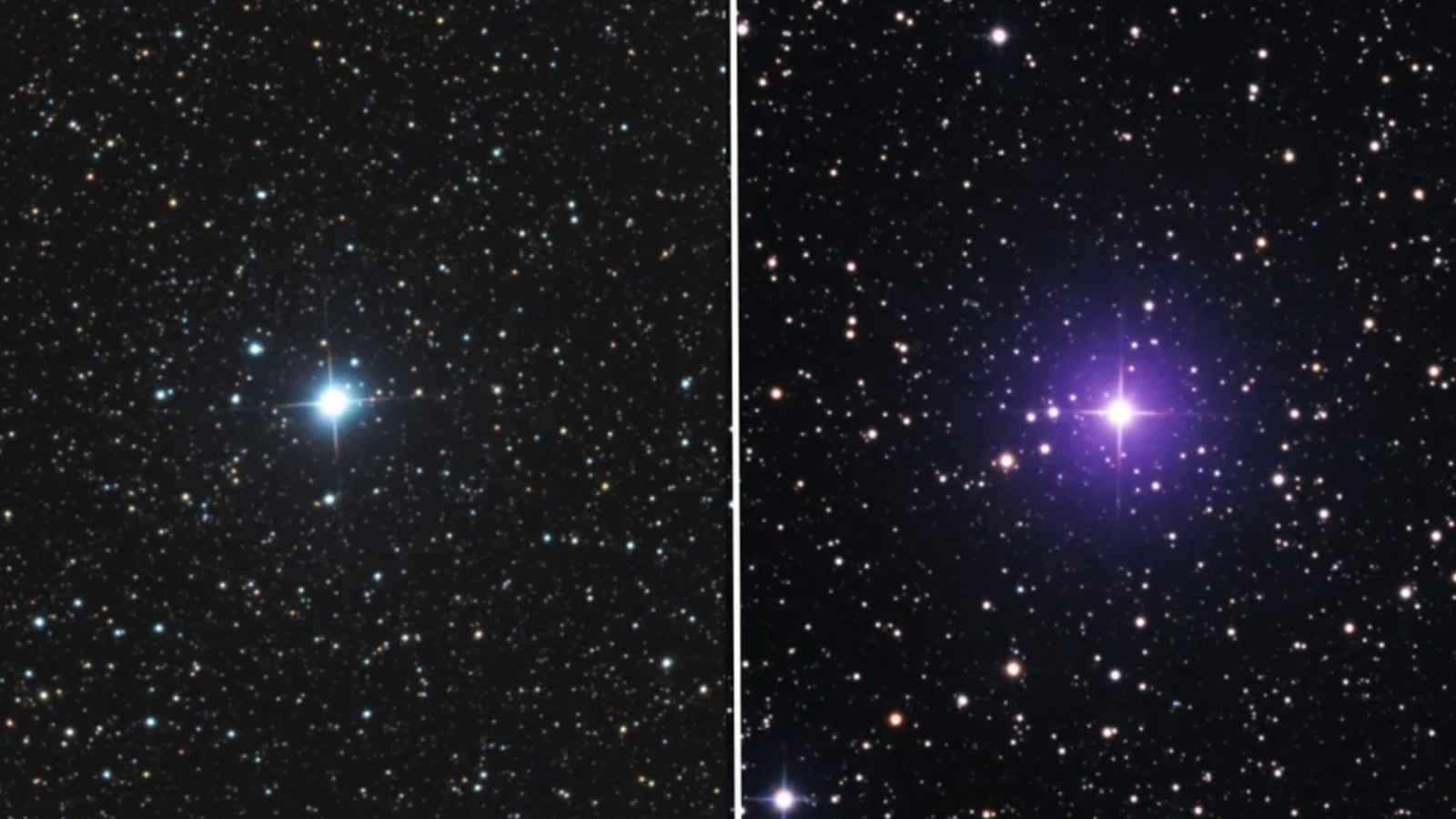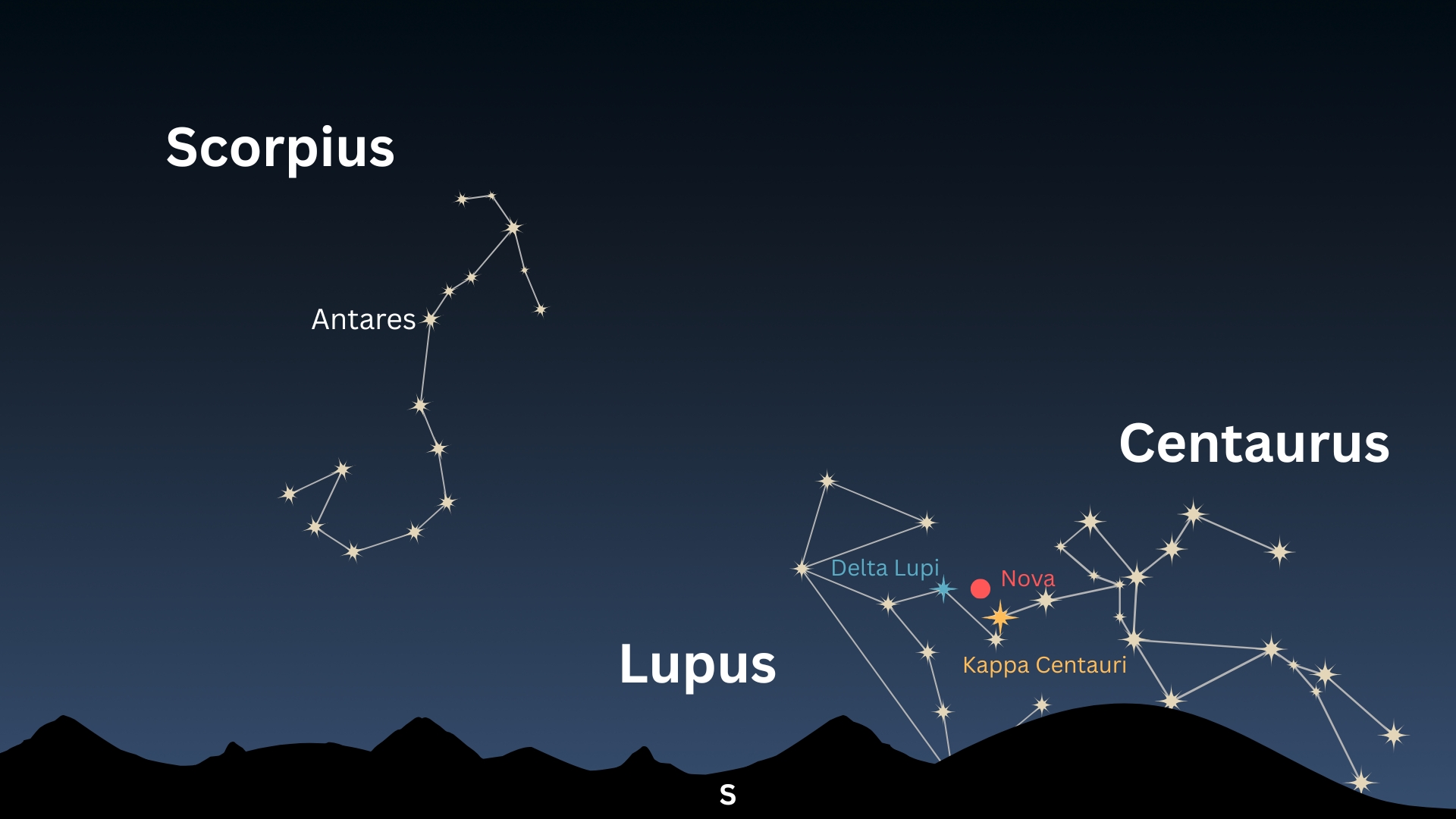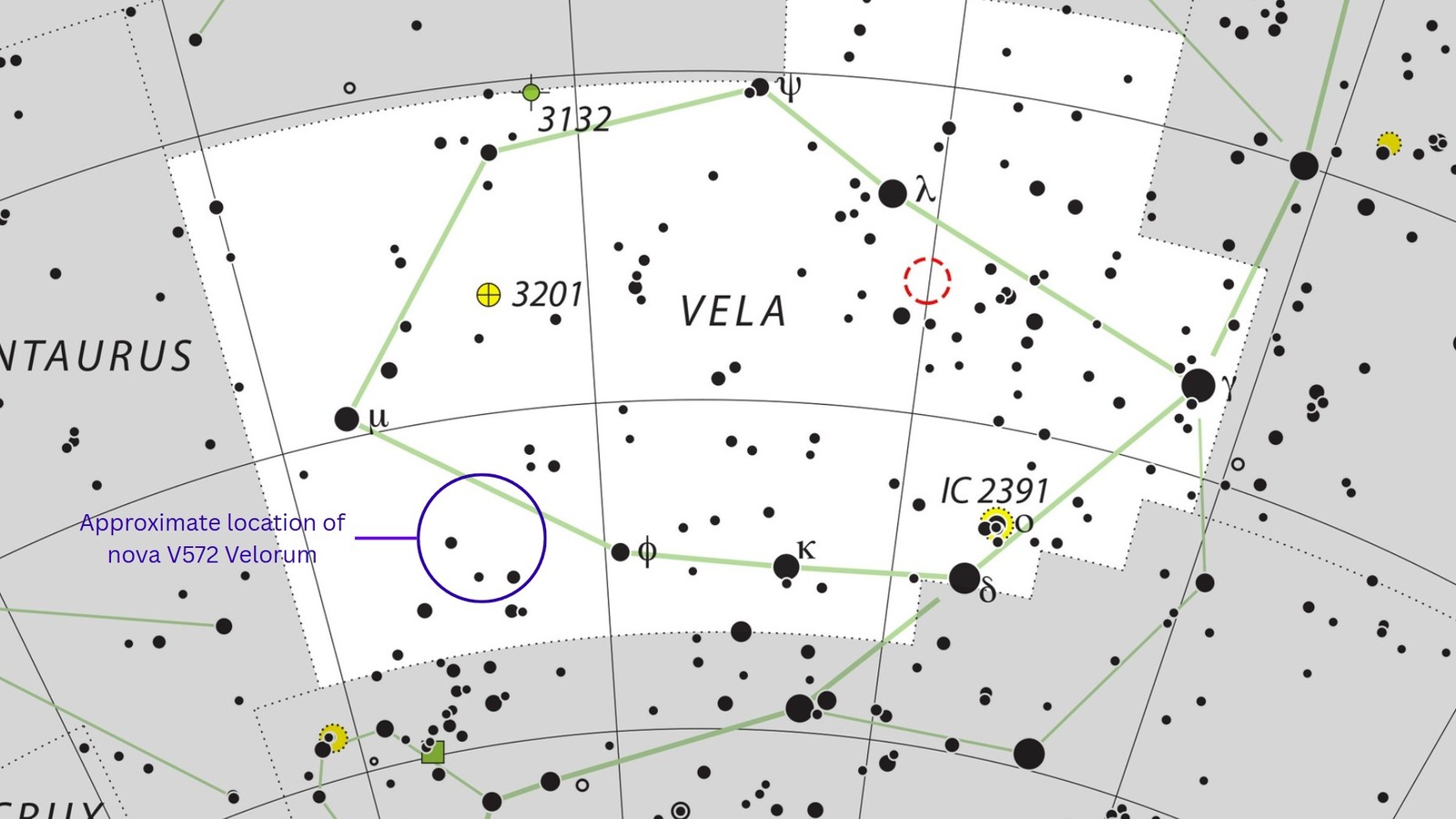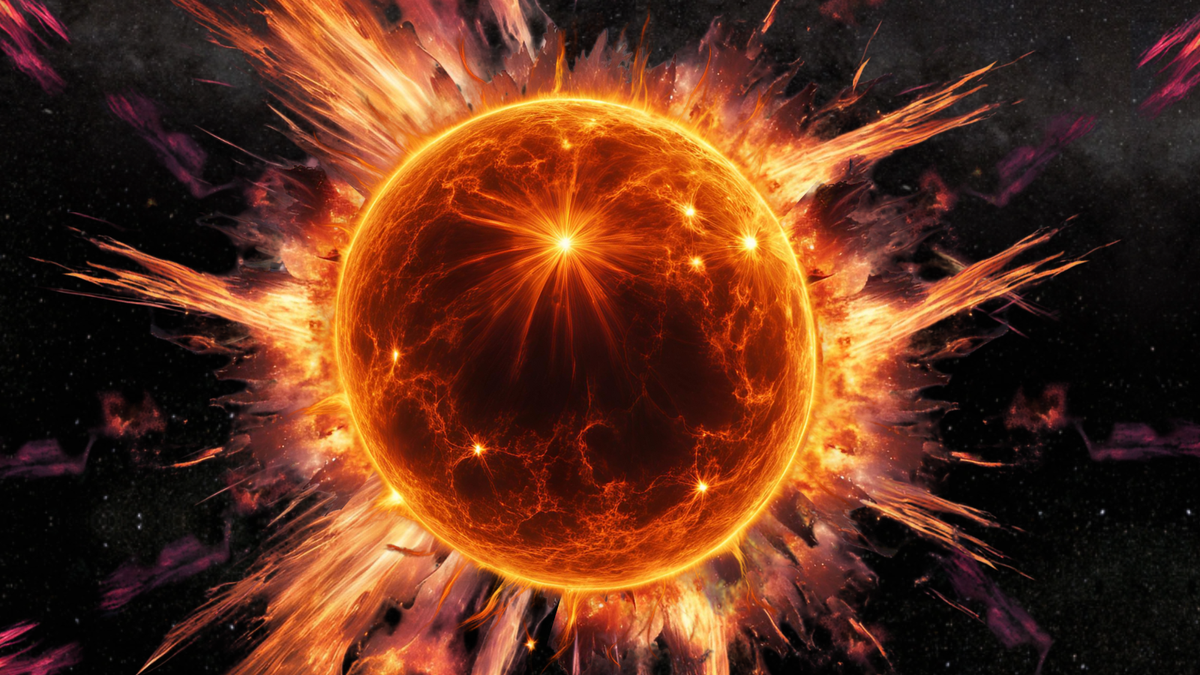Not one, but two exploding stars are currently visible to the naked eye in the southern night sky, a cosmic coincidence that's "exceedingly rare" and may soon vanish from view entirely.
On June 12, the All-Sky Automated Survey for Supernovae (ASAS-SN), led by the Ohio State University, detected a dramatic surge in the brightness of an otherwise unremarkable star embedded in the constellation Lupus. Subsequent observations revealed a powerful nova explosion — now designated V462 Lupi — to be the cause of the radiation outburst. The star quickly brightened from its previously dim magnitude of +22 to a peak brightness of around +5.5, rendering it visible to the naked eye.
Remember, magnitude is the system used by astronomers to track the brightness of an object in the night sky. The lower the magnitude, the brighter the object! The human eye is capable of detecting stars with a magnitude of around +6.5 or greater in dark sky areas.
Less than two weeks later, on June 25, reports began to circulate of a second nova blossoming in the southern night sky, this time in the constellation Vela. This nova — later designated V572 Velorum — quickly jumped to a similar peak of +5.5, making it appear as if two new stars had suddenly burst to life in the skies south of the equator.
A nuclear explosion on the surface of a star
"Both appear to be part of binary star systems composed of a white dwarf and a companion star," veteran science communicator and meteorologist Joe Rao told Space.com in an email. "In each case, the objects that we are able to see visually, are likely being caused by a thermonuclear explosion on the surface of the white dwarf star."
These kinds of explosions are called novas. Unlike,their more violent cousins, supernovas, these events don't destroy the star. Instead, they occur as a result of a vampyric process in which the gravitational influence of a white dwarf strips material from a nearby companion star, adding it to its own mass. This ‘feeding’ continues until the mass of stolen stellar material deposited on the surface of the white dwarf is heated to a critical threshold, after which a cataclysmic thermonuclear explosion is inevitable.
The resulting outpouring of radiation leads to a dramatic increase in a star's apparent brightness from our perspective on Earth, occasionally making it appear as if a new stellar body has burst to life in the night sky.

"To have two naked-eye novae shining in the sky at the same time is an exceedingly rare event"
"To have two naked-eye novae shining in the sky at the same time is an exceedingly rare event," said Rao. "In checking my copy of Norton's Star Atlas, which lists bright novae dating back to the 16th century, I can only find one other case of two novae erupting so close together: V368 Aquilae on September 25, 1936 and V630 Sagittarii just eight days later."
Rao — who serves as an instructor and guest lecturer at New York's Hayden Planetarium — went on to note that the 1936 novas had faded swiftly after reaching their peaks and likely wouldn't have been visible simultaneously. Astronomer Stephen James O'Meara also discovered a 2018 occurrence in which two novas peaked and became visible to the unaided eye on the same day, according to stargazing website Earthsky.org.
Where to find the novas in the southern sky
"Generally speaking, most novae fade from view after a few weeks, although some may fade much faster (as was the case with the aforementioned novae in 1936) and sometimes the fade-down may take longer," said Rao. "In the case of V572 Velorum, it apparently exhibits both long (over 13 days) and short (3-4 days) outbursts."

It may still be possible to spot the ancient light from both novas from a dark sky location for observers in the southern hemisphere. Meanwhile, those in the southern U.S. might yet glimpse V462 Lupi peeking above the horizon — perhaps with the aid of a pair of 10X50 binoculars.
The patch of sky containing V462 Lupi is located in the constellation Lupus, close to the bright stars Delta Lupi and Kappa Centauri, from the neighboring constellation Centaurus. Lupus will be highest in the sky for those in the southern hemisphere, though those in the southernmost states of the U.S. may spot the constellation — and the site of the nova — close to the southern horizon at sunset in early July.

V572 Velorum meanwhile, can be found in the southern constellation Vela and is not easily visible from the continental United States. Viewers in the southern hemisphere will find the region of sky containing the nova close to the bright stars Mu Velorum and Phi Velorum.
If you do manage to catch even a fleeting glimpse of either V572 Velorum, or V462 Lupi, you will have witnessed first hand one of the most spectacularly violent explosions that the universe has to offer. Not bad for one evening’s stargazing.
Editor's Note: If you capture an image of a nova and want to share it with Space.com's readers, then please send your photo(s), comments, and your name and location to spacephotos@space.com.
.png)
 German (DE)
German (DE)  English (US)
English (US)  Spanish (ES)
Spanish (ES)  French (FR)
French (FR)  Hindi (IN)
Hindi (IN)  Italian (IT)
Italian (IT)  Russian (RU)
Russian (RU) 






Comments